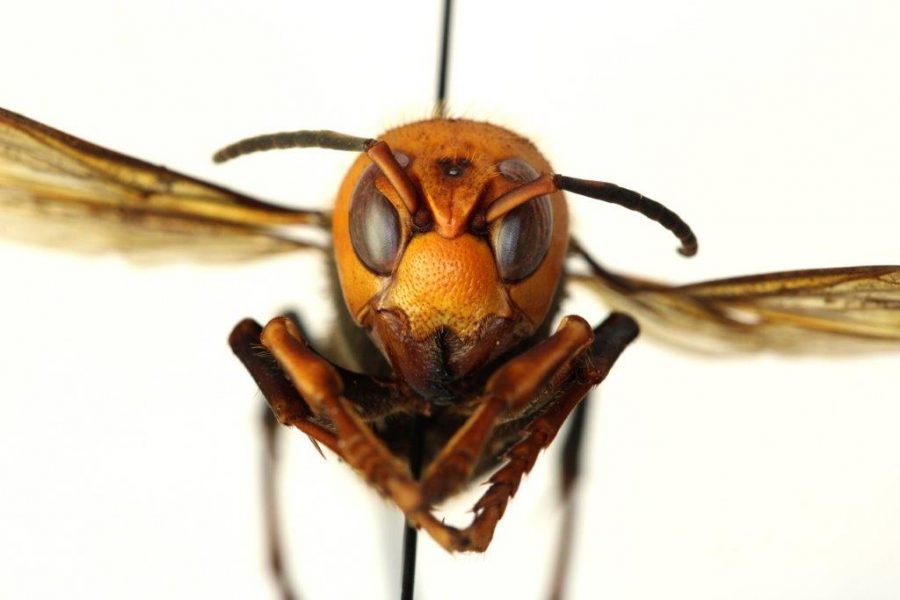Giant hornet makes an appearance in Washington state
Insect can grow up to 2 inches long, has 4.1 microliters of venom, can fly up to 25 miles per hour
The Asian giant hornet is the largest hornet in the world. They eat insects like wasps and honeybees. The hornets can “slaughter” entire honeybee colonies.
April 13, 2020
An invasive, venomous critter that can grow up to 2 inches long has made its way to Washington state.
Susan Cobey, bee breeder at WSU’s Department of Entomology, said the Asian giant hornet, also known as Vespa Mandarinia, is the largest hornet in the world.
“These are just monsters,” Cobey said. “You really can’t imagine the size of this thing.”
The giant hornet attacks other insects like wasps, she said, but honeybees are their favorite food. The hornet devastates bee colonies by “slaughtering” them, she said.
“They just chop their heads off,” Cobey said.
Once the colonies are slaughtered, they extract the brood — baby bees — while they occupy the hive for a number of days, said Todd Murray, director of WSU’s Agricultural and Natural Resources Extension Program Unit.
Honeybees are an “easy target” because they lack defense mechanisms that Japanese honeybees learned to do, according to a fact sheet from the WSU Extension program. Japanese honeybees clump together and create a “heat ball” around the giant hornet, which essentially cooks the hornet to death.
Murray said if the giant hornets get too comfortable in Washington state, it could affect agriculture, pollination and honey production.
Cobey said the giant hornets are an issue not only for bee colonies but beekeepers as well. The regular beekeeping suit is not sufficient enough to prevent a sting from the hornet.
“They have [a] really long stinger,” she said. “I think it’s one of the most painful things.”
Honeybees have 0.6 microliters of venom while the giant hornet has 4.1 microliters, said Tim Lawrence, director at WSU’s Island County extension site. The hornet can also fly up to 25 miles per hour.
“If somebody comes into one of their defense zones, they need to get out of there as quickly as possible, but not necessarily run in a straight line,” Lawrence said. “If they can run around a tree or a bush … it’s a much more effective approach to get away.
Cobey said WSU, as well as the Washington State Department of Agriculture, are involved with placing traps and notifying beekeeping organizations about the hornet.
WSDA received initial reports of giant hornet sightings in December 2019 in Blaine and Bellingham, according to the WSDA website.
Cobey said they received a lot of calls from the public about a possible sighting of the giant hornet, which usually turns out to be an average wasp. Sightings of the Asian giant hornet can be reported to the WSDA.
“[It’s] good that the public is responding and looking,” she said, “but I think it’s really going to be the beekeepers that know it first.”











Amy harris • Apr 16, 2020 at 1:16 am
I’m deathly allergic to bees..I’m not afraid of them but very aware.ive noticed in the past couple years they have grown to be like hulk size..that is what I started calling them..super bees..they are beyond normal..some how we need to find a way to stop these big bullies there is no place for them..I call them the murderer of bees..our honey bees stand no chance against the super bees..